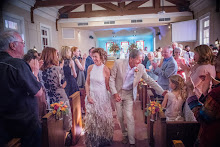Feldenkrais, movement and children
CHILDREN AND FELDENKRAIS
Once upon a time, I taught fourth grade. I like to ask the children their favorite time of day. There were always two answers: lunch ( food, plus freedom to move) and recess ( freedom to move). One has to spend only a short while with a three year old to see how exciting and delightful movement is to children.
Life is movement. Slow movement in a redwood tree, faster in bamboo, and we get to walk to the redwood trees in Bartholomew Park. To walk on two feet is not so easy and yet almost every child performs this feat of genius: they learn to roll over, to raise their head to look at the world, they learn to crawl, to walk. And to talk. Another act of genius. Our brains are mighty and magnificent and love to learn.
How might we re-awaken our latent and deeply human urge to learn? One way is to re-establish a connection to our love of and fascination with movement. Movement that is “present” at three levels is truly delicious, an opportunity to “wake up” to our Life. Like this: find a peaceful place to walk. Sense your arms and legs as they move and be aware of which foot is pressing down on the Earth. That’s the skeletal level. Add on awareness of breath, the old life maintaining breathing in and breathing out. That’s the lung, heart, air level. And add on an awareness of light coming into the eyes and sound coming into the ears as we stroll through the world on this miracle called Life.
Some people think that if you can improve the quality of your movement, you can improve the quality of your life. Moshe Feldenkrais was one of these people. Born in 1904, in what is now Poland, he left home at 14 and walked to Palestine. Starting life there as a laborer, he later received a doctor in science in physics from the Sorbonne in France. Mastering several languages, always intensely curious, he became the appointed Westerner to bring judo to Europe. Wrecking his knees playing soccer, he opted to discover how to heal them himself. His discoveries resulted in the Feldenkrais Method®, which he developed and taught from the 50’s until his death in 1984.
Feldenkrais wrote only a few books, with each title illuminating an important aspect of his work: Awareness Through Movement, the Potent Self, and The Elusive Obvious. His work has been of use to all ranges of people, from children with cerebral palsy, to stroke victims, to seniors with balance issues, to professional musicians and athletes, to people with sore backs, shoulders, hips, to those wishing to improve walking, dancing, golf, skiing, or simply the quality of their lives.
What the work always has in common is the awareness that comes from discovering options to our habitual ways of moving.
THIS WORK IS NOT JUST ABOUT BECOMING MORE FLEXIBLE, THOUGH THAT WILL IMPROVE. IT IS ABOUT LEARNING TO CONNECT MORE OF OURSELVES TO MORE OF OURSELVES, TO UNDERSTAND HOW WE CONNECT AND FEEL AND MOVE WHEN WE DO SO WITH EASE AND GRACE. IT IS ASLO ABOUT DISCOVERING POSSIBILITIES OF MOVING THAT WE HAVE PREVIOUSLY NOT KNOWN ABOUT BECAUSE OF OUR HABITUAL WAYS OF UNDERSTANDING OURSELVES AND HABITUAL WAYS OF MOVING.
This may sound vague, but as we walk, there is a deep and useful connection of our left shoulder and right hip, our right foot and the pelvis, our eyes and the spine.
Meditation is nice, and this, an awareness of our arms and legs and breath and spine and light and sound as we move, this is a very sweet meditation. After finishing this chapter we can all go take a walking. Walking isn’t just for warding off feared heart attacks. It’s for exulting in the miracle of being human. Walk today, walk tomorrow. For the rest of your life, watch children and see how they flow as one. And take walks in Nature, delighting to wake at three levels.






0 Comments:
Post a Comment
Subscribe to Post Comments [Atom]
<< Home